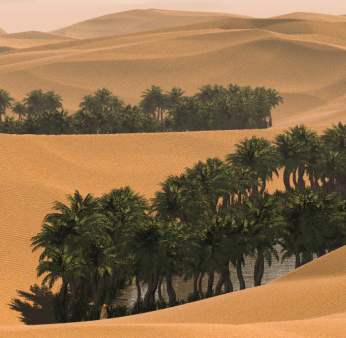Deserts are hot, barren, arid regions, where the topsoil has been whisked away by the wind. They have low rainfall, hot desiccating high speed winds, very high evaporation rates, and high temperatures. Typically most plants and animals are absent from deserts, due to the inhospitable conditions that previal there.
Desert reclamationDesert reclamation involves establishing plants in the affected area.This typically involves the construction of shelterbelts, windbreaks and woodlots - to provide protection against the wind for other plants - and irrigation and fertilization projects. Shelterbelts are composed of rows of trees, typically arranged perpendicular to the prevailing winds. Woodlots are more extensive areas of woodland. Plants which extract nitrogen from the air and fix it in the soil (e.g. legumes) can be useful to help restore fertility to deserted regions. Ground treatments with bacteria and clays can transform sandy regions into something more closely resembling concrete. A crust on the dunes makes the sand less likely to be blown about - and helps control dust storms. It also makes the sand retain moisture better by decreasing evaporation surfaces.
Links |
